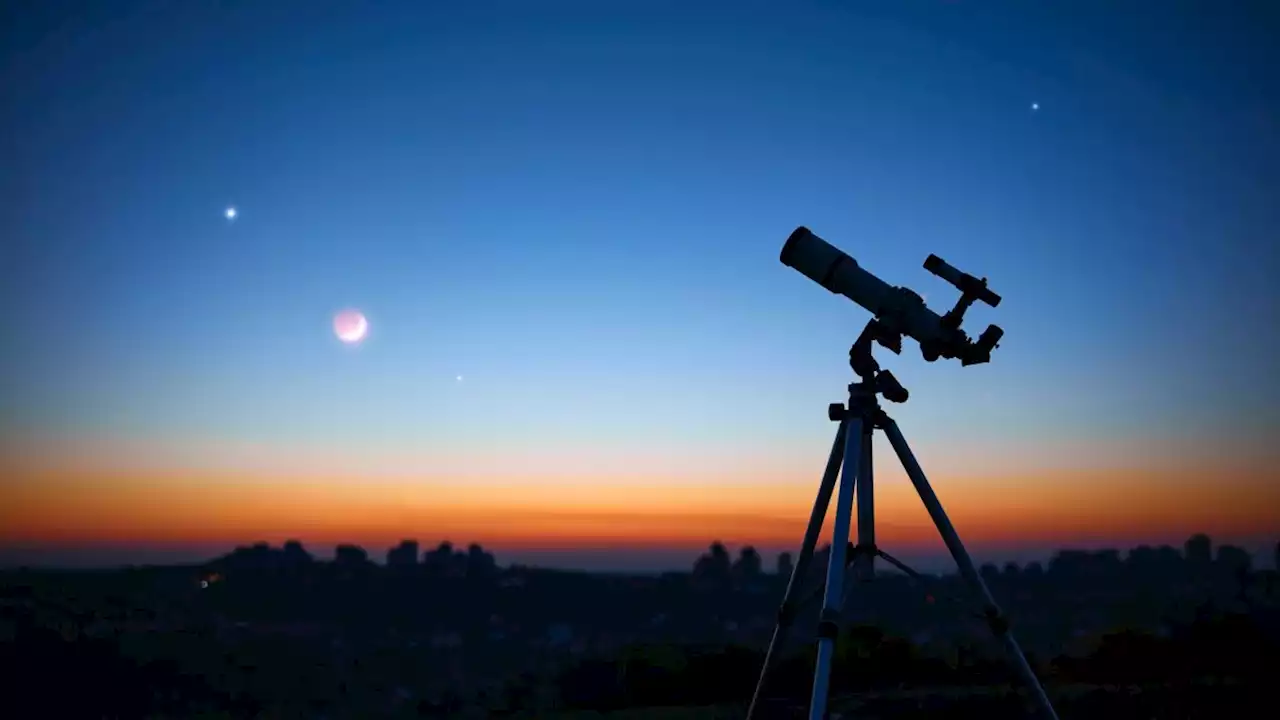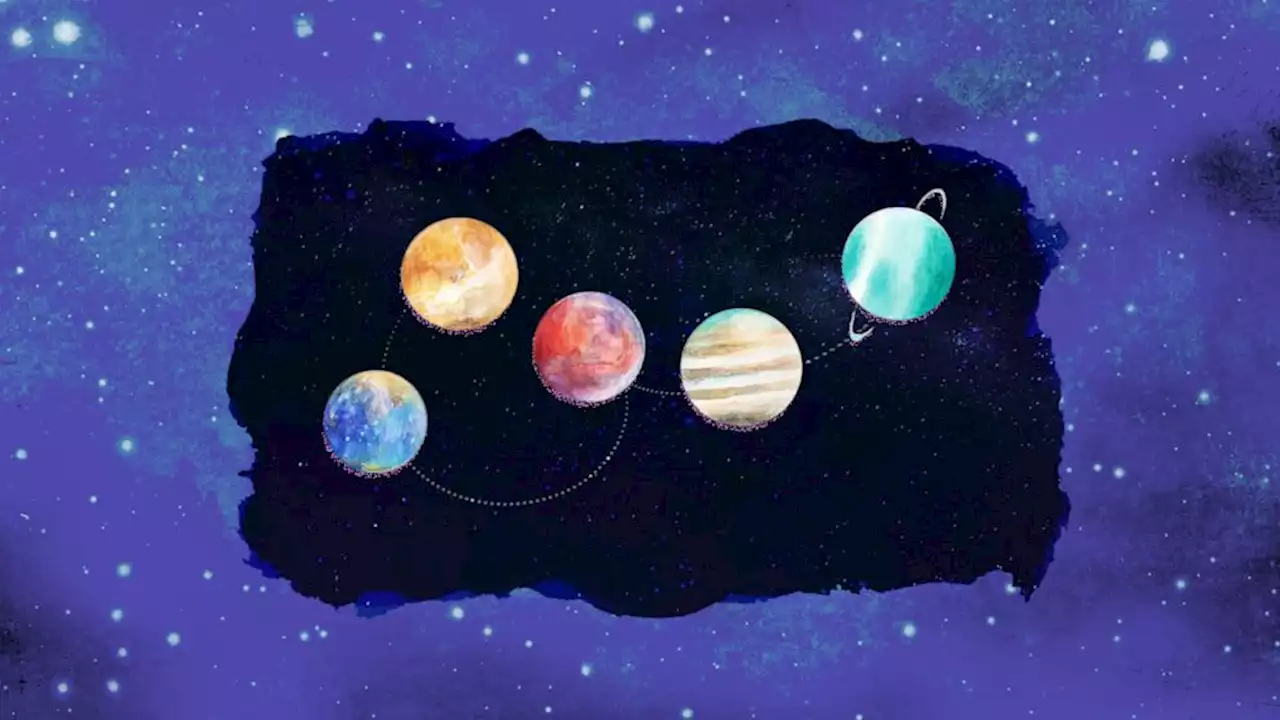A five-planet alignment of Mercury, Jupiter, Venus, Uranus and Mars will be visible in the night sky next week.
He said to grab a pair of binoculars and head outside right after sunset in order to see Mercury and Jupiter, which will be the closest to the western horizon.
"Perhaps the hardest to see with your eye will be the planet Mercury, [which] will be the one closest to the horizon, and right beside it will be a brighter object, planet Jupiter," said Cooke, who added that the next planet, Venus, will probably be the brightest planet to spot, whereas Uranus, a green star, can be hard to see with an unaided eye.
"Of course, the capper will be the moon, which will be halfway lit up just above Mars. So you'll get five planets and theEach planet in our solar system, excluding the now-relegated Pluto, shares the same orbital plane. During a planetary alignment, the planets will appear to "bunch" on the same side of the sun -- forming a line but appearing as an arc since the sky "is like a dome," according to Cooke.
Cooke said planetary alignments happen every few years, but the configurations vary. The last planetary alignment was a four-planet alignment on Dec. 28, 2022. "You're worrying that planetary alignments are rare, but honestly we get one every couple of years. It may involve four planets, or it may involve five planets, but planetary alignments -- they can put on a show," Cooke said.
United States Latest News, United States Headlines
Similar News:You can also read news stories similar to this one that we have collected from other news sources.
 Five planets will align across the night sky near the end of March. Here's how to see themThe planets will align right before the turn of the month on March 28, according to Starwalk.
Five planets will align across the night sky near the end of March. Here's how to see themThe planets will align right before the turn of the month on March 28, according to Starwalk.
Read more »
 When you'll be able to see five planets align in the night skyFive planets — Jupiter, Mercury, Venus, Uranus and Mars — will align on in the evening later this month.
When you'll be able to see five planets align in the night skyFive planets — Jupiter, Mercury, Venus, Uranus and Mars — will align on in the evening later this month.
Read more »
 Here’s your chance to see 5 planets at the same timeJupiter, Venus, Mars, Mercury and Uranus will all gather within a small 50-degree sky sector. Here's what to know.
Here’s your chance to see 5 planets at the same timeJupiter, Venus, Mars, Mercury and Uranus will all gather within a small 50-degree sky sector. Here's what to know.
Read more »
 Here’s your chance to see 5 planets at the same timeJupiter, Venus, Mars, Mercury and Uranus will all gather within a small 50-degree sky sector. Here's what to know.
Here’s your chance to see 5 planets at the same timeJupiter, Venus, Mars, Mercury and Uranus will all gather within a small 50-degree sky sector. Here's what to know.
Read more »
 5 planets and a crescent moon are about to line up in the night sky. Here's how to watch.Don't miss views of Mercury, Jupiter, Venus, Uranus, Mars and the moon after sunset from March 23-30.
5 planets and a crescent moon are about to line up in the night sky. Here's how to watch.Don't miss views of Mercury, Jupiter, Venus, Uranus, Mars and the moon after sunset from March 23-30.
Read more »
 Watch Jupiter meet the moon and Mercury this week before leaving the night skyThe solar system's largest planet will meet up with its smallest planet in the night sky.
Watch Jupiter meet the moon and Mercury this week before leaving the night skyThe solar system's largest planet will meet up with its smallest planet in the night sky.
Read more »
